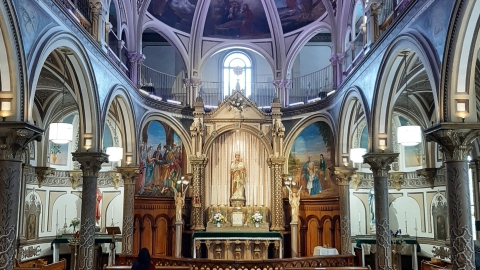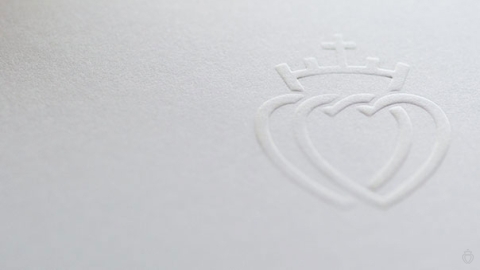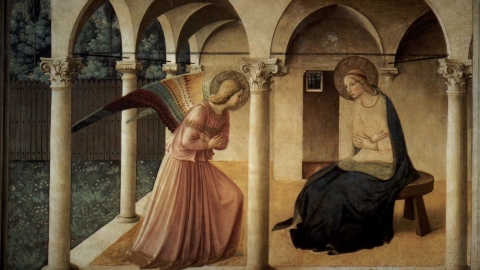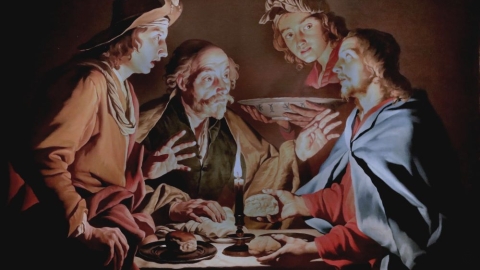Archbishop Viganò in 2020, Archbishop Lefebvre in 1966

In a response dated May 29, 2020, to a letter from a cloistered nun, Archbishop Carlo Maria Viganò, a former apostolic nuncio to the United States, speaks of the current crisis in the Church as “the metastasis of the conciliar cancer.” This letter and Archbishop Viganò response were published on May 31 by Marco Tosatti on his blog Stilum Curiæ, and translated by Jeanne Smits on her own blog on June 2.
The assertion of the Roman diplomat is found in the following paragraph: “I believe that the essential point for effectively conducting a spiritual, doctrinal, and moral battle against the enemies of the Church is the persuasion that the present crisis is the metastasis of the conciliar cancer. If we have not understood the causal relationship between Vatican II and its logical and necessary consequences over the course of the last sixty years, it will not be possible to steer the rudder of the Church back to the direction given by her Divine Helmsman, the course that she maintained for two thousand years.”
They catechized us with the hateful phrase ‘there is no going back’ with regard to the Liturgy, the Faith, moral teaching, penance, asceticism. Now, we hear the same expressions slavishly repeated in the civil sphere, through which the attempt is made to indoctrinate the masses that ‘nothing will be as it was before.’ Modernism and Covid-19 are part of the same brand. For people having their gaze towards the transcendent, it is not difficult to understand that the greatest fear of those who want us to believe that the race towards the abyss is both unavoidable and unstoppable is that we will not believe them, ignore them, and unmask their conspiracy. This is our task today: to open the eyes of many people, even those of clergymen and religious who have not yet recognized the big picture, limiting themselves to looking at reality in a partial and disordered way. Once we have made them understand the mechanism, they will also understand everything else.”
“Yes, we can go back; we can ensure that the good that has been fraudulently removed from us is returned to us: but only consistent with doctrine, without compromise, without yielding anything, without opportunism. The Lord will deign to grant us a part of His victory—even if we are weak and without material means—but only if we totally surrender ourselves to Him and to His Most Holy Mother.”
On August 18, 1976, at the end of his preface to I Accuse the Council (Angelus Press, 1982), Archbishop Marcel Lefebvre, founder of the Society of Saint Pius X, wrote: “The conclusion is inescapable, especially in light of the widespread turmoil which the Church has experienced since the Second Vatican Council. This destructive occurrence for the Catholic Church and all Christian civilization has not been directed nor led by the Holy Ghost.”
“To denounce publicly the machinations of churchmen who sought to make this Council the Church’s peace of Yalta with her worst enemies, which is in reality a new betrayal of Our Lord Jesus Christ and His Church, is to render an immense service to Our Lord and to the salvation of souls.”
In the section, “A Note on the Title” of the book, Archbishop Lefebvre stated: “It is imperative, therefore, to shatter the myths which have been built up around Vatican II. This Council had wished to be a pastoral Council because of its instinctive horror for dogma, and to facilitate the official introduction of Liberal ideas into Church texts. By the time it was over, however, they had dogmatized the Council, comparing it with that of Nicea, and claiming that it was equal, if not superior, to the Councils that had gone before it!”
On December 20, 1966, in a letter to Cardinal Alfredo Ottaviani, prefect of the Congregation for the Doctrine of the Faith, the French prelate wrote: “we can and we must unfortunately state that: In a more or less general way, when the Council has introduced innovations, it has unsettled the certainty of truths taught by the authentic Magisterium of the Church as unquestionably belonging to the treasure of Tradition.”
“The transmission of the jurisdiction of the bishops, the two sources of Revelation, the inspiration of Scripture, the necessity of grace for justification, the necessity of Catholic baptism, the life of grace among heretics, schismatics, and pagans, the ends of marriage, religious liberty, the last ends, etc. On all these fundamental points the traditional doctrine was clear and unanimously taught in Catholic universities. Now, numerous texts of the Council on these truths will henceforward permit doubt to be cast upon them. The consequences of this have rapidly been drawn and applied in the life of the Church” (p. 82).
So follow, from the pen of Archbishop Lefebvre, the practical, pastoral consequences of these doubts:
- “doubts about the necessity of the Church and the sacraments lead to the disappearance of priestly vocations;
- doubts on the necessity for and nature of the “conversion” of every soul involve the disappearance of religious vocations, the destruction of traditional spirituality in the novitiates, and the uselessness of the missions;
- doubts on the lawfulness of authority and the need for obedience, caused by the exaltation of human dignity, the autonomy of conscience and liberty, are unsettling all societies beginning with the Church—religious societies, dioceses, secular society, the family;
- doubts regarding the necessity of grace in order to be saved result in baptism being held in low esteem, so that for the future it is to be put off until later, and occasion the neglect of the sacrament of Penance;
- doubts on the necessity of the Catholic Church as the only true religion, the sole source of salvation, emanating from the declarations on ecumenism and religious freedom, are destroying the authority of the Church’s Magisterium. In fact, Rome is no longer the unique and necessary Magistra Veritatis.”
“Thus, driven to this by the facts, we are forced to conclude that the Council has encouraged, in an inconceivable manner, the spreading of Liberal errors. Faith, morals, and ecclesiastical discipline are shaken to their foundations, fulfilling the predictions of all the Popes” [before Vatican II] (p. 82-83).
It was 54 years ago. And already Archbishop Lefebvre had established this “causal relationship between Vatican II and its logical and necessary consequences” which Archbishop Viganò sees today as the cancerous metastases.
(Sources : Stilum Curiæ, trad. à partir de J. Smits /J’accuse le Concile/DICI – FSSPX.Actualités - 26/06/2020)



